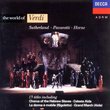| All Artists: Johannes Brahms, Ludwig van Beethoven, Wilhelm Furtwängler, Vienna Philharmonic Orchestra Title: Brahms: Symphonies, Hungarian Dances, Haydn Variations; Beethoven: Overtures / Furtwangler, Berlin PO, Vienna PO Members Wishing: 0 Total Copies: 0 Label: Angel Records Release Date: 9/19/1995 Album Type: Import Genres: Dance & Electronic, Classical Styles: Forms & Genres, Theatrical, Incidental & Program Music, Historical Periods, Classical (c.1770-1830), Modern, 20th, & 21st Century, Symphonies Number of Discs: 3 SwapaCD Credits: 3 UPC: 724356551329 |
Search - Johannes Brahms, Ludwig van Beethoven, Wilhelm Furtwängler :: Brahms: Symphonies, Hungarian Dances, Haydn Variations; Beethoven: Overtures / Furtwangler, Berlin PO, Vienna PO
 | Johannes Brahms, Ludwig van Beethoven, Wilhelm Furtwängler Brahms: Symphonies, Hungarian Dances, Haydn Variations; Beethoven: Overtures / Furtwangler, Berlin PO, Vienna PO Genres: Dance & Electronic, Classical
Brahms and Beethoven were the center of Furtwängler's universe, the composers whose music he most closely identified with and whose art gave him the greatest sense of fulfillment and renewal. While they are perhaps no... more » |
Larger Image |
CD DetailsSynopsis
Amazon.com essential recording Brahms and Beethoven were the center of Furtwängler's universe, the composers whose music he most closely identified with and whose art gave him the greatest sense of fulfillment and renewal. While they are perhaps not the finest of the conductor's outings ever captured, the postwar realizations collected here--of the four Brahms symphonies, the Variations on a Theme by Haydn, and the three Hungarian Dances that Brahms himself orchestrated, as well as two Beethoven overtures--show Furtwängler in an exemplary light, as an insightful interpreter and a compelling, spontaneous musical presence. Those qualities come across with particular point in the Brahms symphonies, which are all taken from live performances (No. 1 is played by the Vienna Philharmonic, Nos. 2 through 4 by the Berlin Philharmonic), with noticeable audience noise and such problems as the occasional piquant tuning of chords, but also with plenty of the excitable, impassioned, and highly profiled musicmaking for which Furtwängler was famous. These are turbulent and expressive readings, not autumnal and reserved, and certainly not understated. In fact, the Third (from 1949) emerges, if anything, somewhat overstated in this, the earliest of Furtwängler's four recordings of the piece: one can feel the orchestra straining at the bit at the beginning of the first movement, and again at the exposition repeat, and the performance as a whole seems too episodic, too hurried, and lacking in grip. It's a different story with the rest of the canon. The Fourth (recorded in 1948) receives a powerful reading, very firm in conception, while the Second (from 1952) is quite intense and appealing, notable for the soaring lyricism Furtwängler imparts to the Adagio and the giddiness he brings to the finale. Furtwängler performed and recorded the First more than any other Brahms symphony, and he excited a particularly strong response in the Vienna Philharmonic when he led this performance in 1952. Listening to it, or any of the others in this set, one realizes rather quickly what's so remarkable about this conductor: he gave performances that were experiences of the music, not mere reconstructions of it. Nobody makes music like this any more. --Ted Libbey Similar CDs
|
CD ReviewsAn amazing set of the Brahms symphonies 05/03/1999 (5 out of 5 stars) "Did you think that the Brahms symphonies were rather staid and four-square? If so, listen to this set. Furtwangler interprets Brahms like no other conductor before or since. Breathtaking." An important Brahms cycle, now somewhat outmoded Santa Fe Listener | Santa Fe, NM USA | 12/31/2006 (4 out of 5 stars) "
This was the earliest complete Brahms cycle on CD from Furtwangler, and I remember being excited to fnd it but sorely disappointed by the murky radio sound. Furtwangler was best in live performance, and two of the ones here--the Second and Fourth symphonies--are among his most dynamic readings of these pieces. They are also in marginally better sound than the First and considerably better than the Third. But newcomers to historical recordings would still be put off, I think. There's now another Brahms cycle with all-around better sound on Music and Arts; in any event, critical consensus seems to prefer it. There are also individual readings, like the First Sym. on Tahra, which come in first-rate mono. If high-tech remastering could be applied to the EMI set, it would become far more appealing. EMI has made little effort so far, but in their recent Furtwangler reissues better things are being done (E.Gl, the two-disc Wagner collection and the live Mozart from Vienna with Sym. 40 and the Gran Partita wind serenade). For the time being this Brahms set remains an important document that's behind the curve but still worthy of consideration." |

 Track Listings (17) - Disc #1
Track Listings (17) - Disc #1


